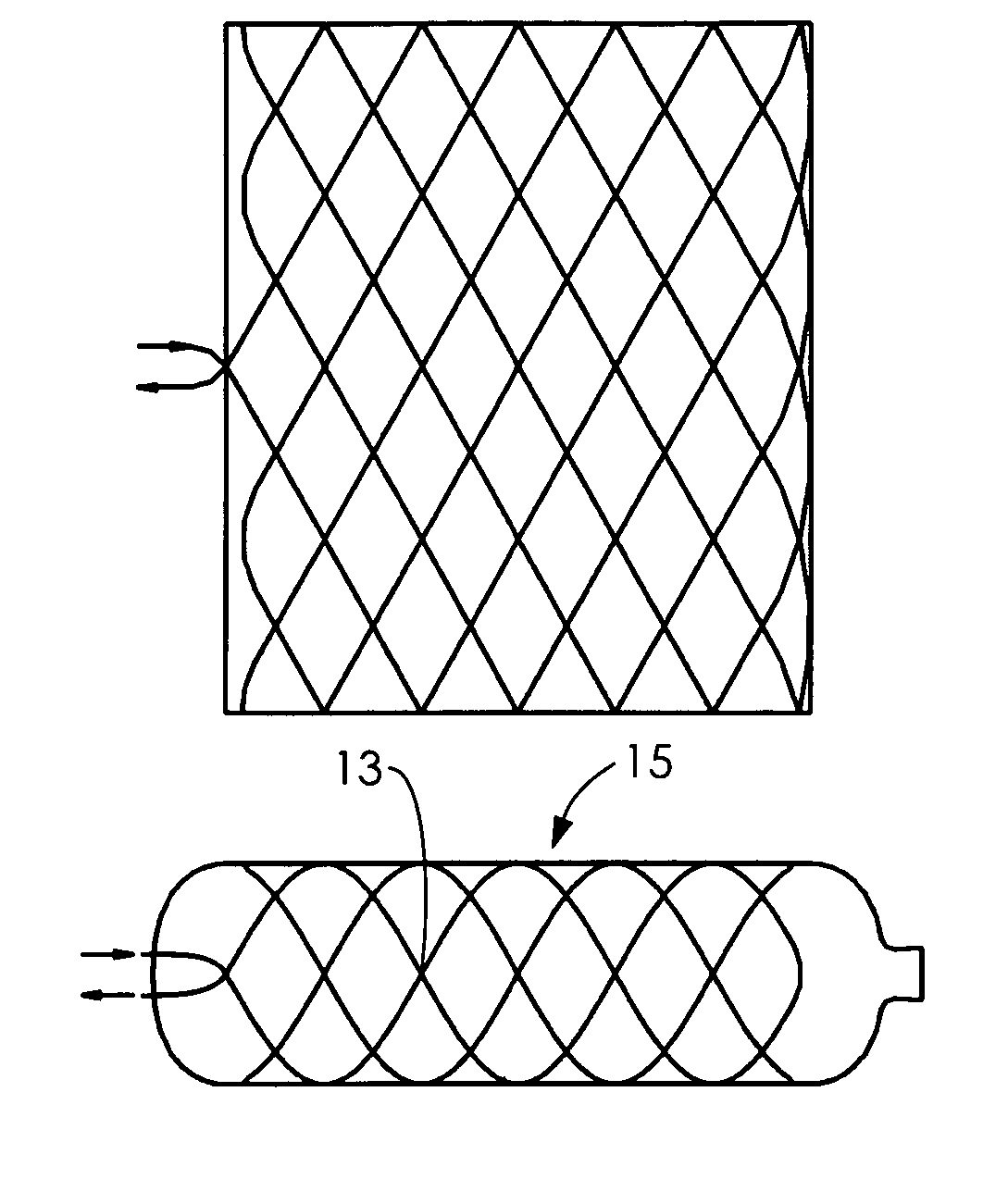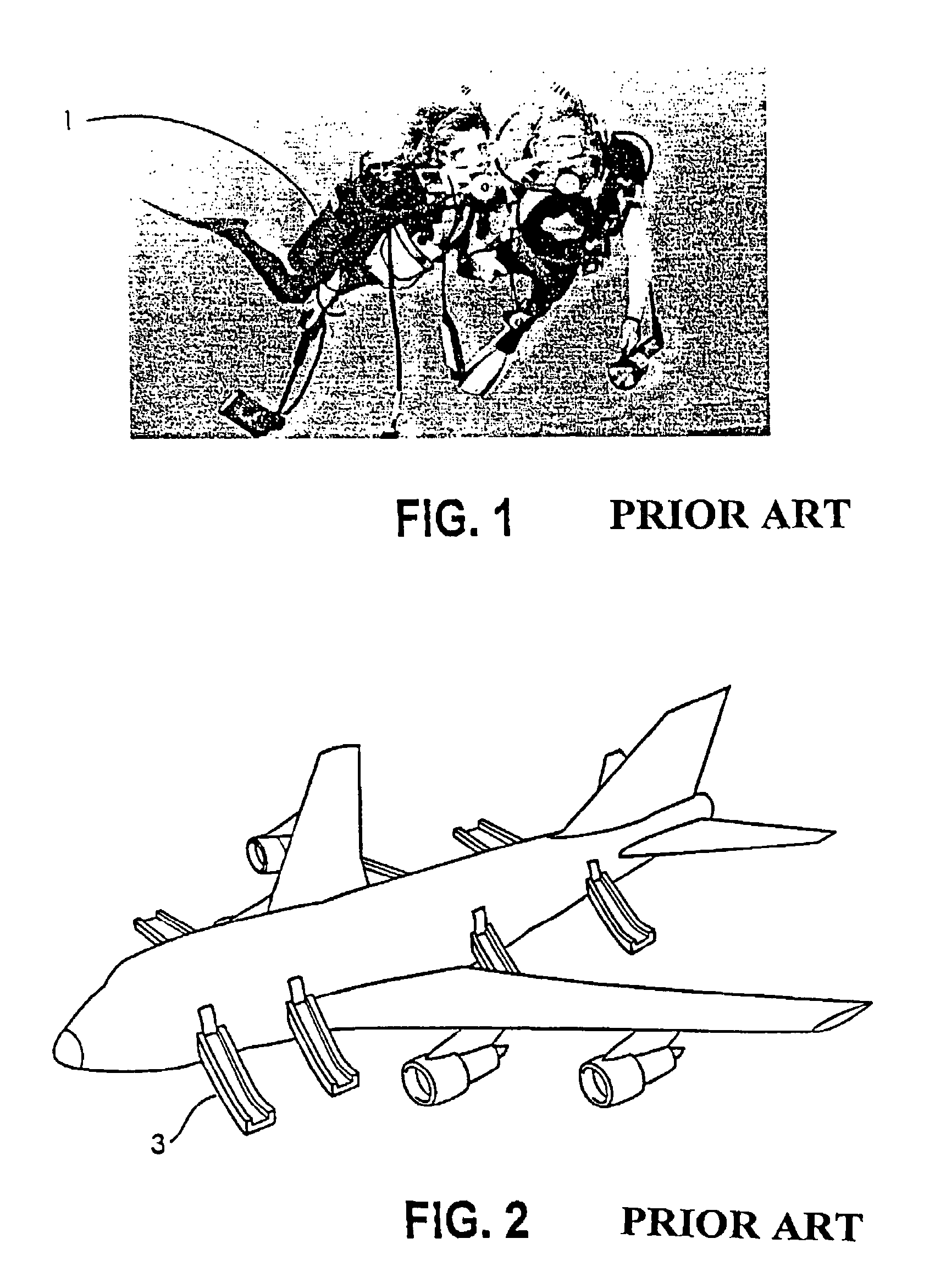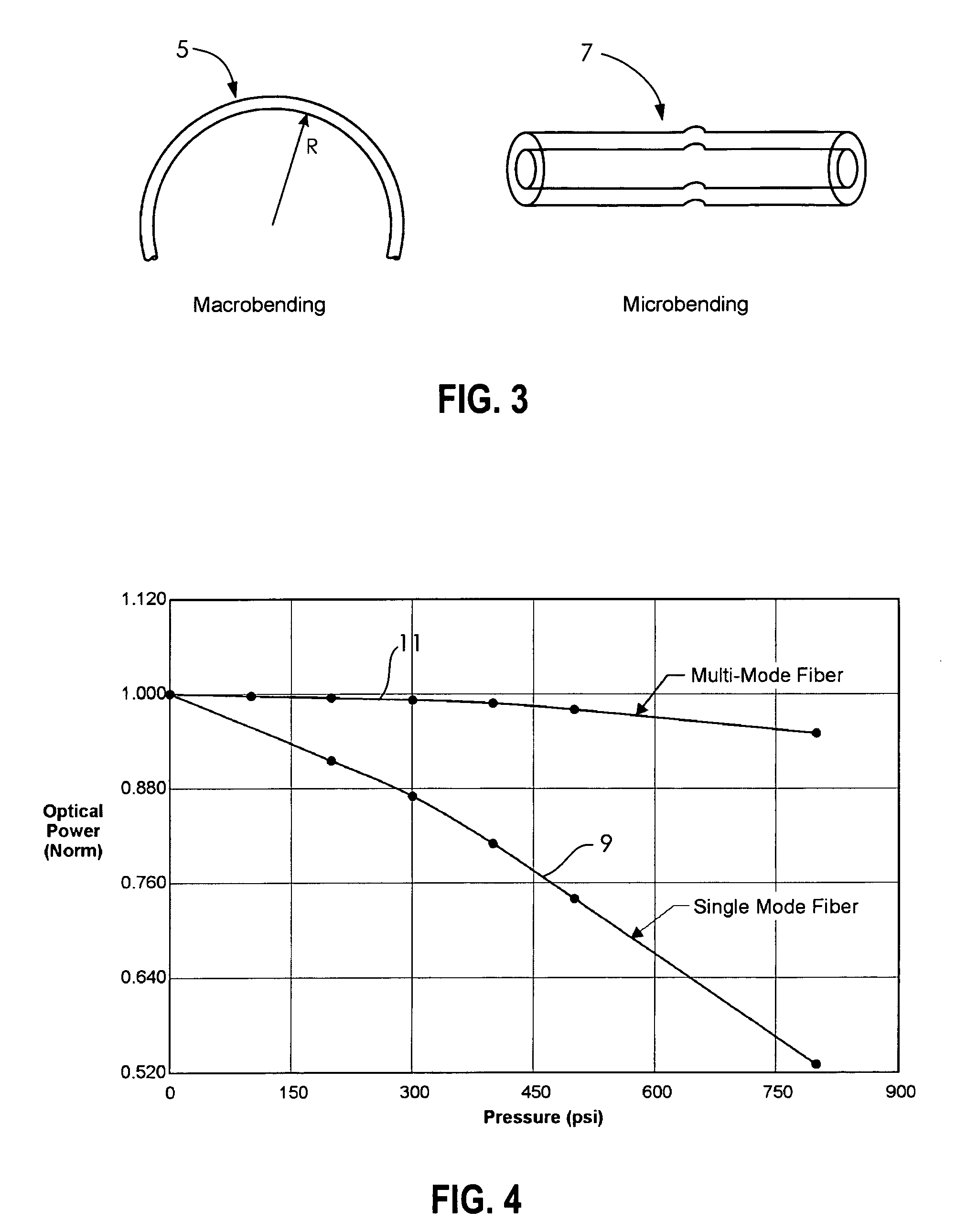Fiber optic sensors for composite pressure tanks with micro bend pinch points
a technology of fiber optic sensors and composite pressure tanks, which is applied in the direction of optical radiation measurement, liquid/fluent solid measurement, instruments, etc., can solve the problem that the tank must be removed from service for testing, and achieve the effect of improving the safe operation of the composite tank and substantial maintenance cost savings
- Summary
- Abstract
- Description
- Claims
- Application Information
AI Technical Summary
Benefits of technology
Problems solved by technology
Method used
Image
Examples
Embodiment Construction
[0054]Optical fibers are manufactured for specific wavelengths of light that maximize light power transmitted through the fiber and minimize light loss as the fiber is bent. This approach is needed for telecommunication fibers where light must be transmitted over long distances. For an optical sensor, however, a different approach must be taken. Since the sensor will function as a microbend sensor, an optical fiber that is sensitive to fiber bending should be used.
[0055]Transmitted light power is lost in response to microbending. The very small bend radius associated with microbending diminishes power when the highest-order guided mode in the fiber core is coupled to the first cladding (radiation) mode, which then is rapidly attenuated. FIG. 3 compares macrobending 5 and microbending 7. The curvatures of the bent fiber are very small, and very abrupt, for microbending than for the more gentle macrobending.
[0056]Fibers are produced as single mode or multi-mode carriers of light. As s...
PUM
 Login to View More
Login to View More Abstract
Description
Claims
Application Information
 Login to View More
Login to View More - R&D
- Intellectual Property
- Life Sciences
- Materials
- Tech Scout
- Unparalleled Data Quality
- Higher Quality Content
- 60% Fewer Hallucinations
Browse by: Latest US Patents, China's latest patents, Technical Efficacy Thesaurus, Application Domain, Technology Topic, Popular Technical Reports.
© 2025 PatSnap. All rights reserved.Legal|Privacy policy|Modern Slavery Act Transparency Statement|Sitemap|About US| Contact US: help@patsnap.com



